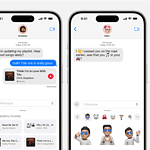Forgetting a Windows 10 password can be frustrating, but there are ways to regain access to your computer. Microsoft offers several methods to reset a forgotten password, including online tools, security questions, and password reset disks. These options work for both Microsoft accounts and local accounts.
Users can start the password recovery process directly from the Windows lock screen. Clicking “I forgot my password” initiates a series of steps to verify identity and create a new password. For those with Microsoft accounts, email verification or security questions may be used. Local account users might need to use a password reset disk or enable the hidden Administrator account.
Password managers can help prevent future lockouts by securely storing complex passwords. Creating a strong, memorable password is crucial for maintaining account security. Regular password updates and using two-factor authentication add extra layers of protection to Windows 10 accounts.
Regaining Access to Your Windows 10 Account
Forgetting your Windows 10 password can be frustrating, but thankfully there are several ways to regain access to your account. Here are some methods you can try:
1. Using Your Microsoft Account
If you use a Microsoft account to log in to Windows 10, you can reset your password online:
- Go to the Microsoft account password reset page.
- Enter the email address or phone number associated with your Microsoft account.
- Follow the on-screen instructions to verify your identity and reset your password.
2. Using a Password Reset Disk
If you created a password reset disk beforehand, you can use it to reset your password:
- Connect the password reset disk to your computer.
- On the Windows 10 sign-in screen, click “Reset password.”
- Follow the on-screen instructions to reset your password using the password reset disk.
3. Using Security Questions
If you set up security questions for your local account, you can use them to reset your password:
- On the Windows 10 sign-in screen, enter an incorrect password.
- Click “Reset password.”
- Answer your security questions correctly.
- Enter a new password and confirm it.
4. Using Command Prompt
If you’re comfortable using the command prompt, you can try this method:
- Boot your computer from a Windows 10 installation media or recovery drive.
- On the Windows Setup screen, press Shift + F10 to open the command prompt.
- Enter the following commands, pressing Enter after each one:
move c:\windows\system32\utilman.exe c:\windows\system32\utilman.exe.bak
copy c:\windows\system32\cmd.exe c:\windows\system32\utilman.exe- Remove the installation media or recovery drive and restart your computer.
- On the Windows 10 sign-in screen, click the “Ease of Access” icon in the bottom right corner.
- This will open the command prompt. Enter the following command, replacing “username” with your actual username and “new_password” with your new password:
net user username new_password- Press Enter. You should now be able to log in with your new password.
5. Using Third-Party Tools
Several third-party tools can help you reset your Windows 10 password. These tools often require a bootable USB drive or CD.
Important Note: Using third-party tools can be risky, so make sure you choose a reputable tool and follow the instructions carefully.
Key Takeaways
- Windows 10 offers multiple password reset options for both Microsoft and local accounts
- The password recovery process can be started directly from the lock screen
- Using a password manager and strong passwords helps prevent future lockouts
Recovering Your Windows 10 Password
Several methods exist for regaining access to a Windows 10 system after forgetting the password. These approaches range from using pre-created tools to leveraging built-in features and utilities.
Using the Password Reset Disk
A password reset disk serves as a lifeline when a Windows 10 password is forgotten. This tool must be created before the password is lost. To use it, insert the disk at the login screen and click “Reset password.”
Follow the wizard’s prompts to set a new password. The process is straightforward and quick. After completion, users can log in with the new credentials.
This method works only for local accounts. Microsoft accounts require different recovery steps. Password reset disks are especially useful for shared or family computers where multiple users might need access.
Resetting Password via Microsoft Account
Microsoft accounts offer an online password reset option. On the login screen, select “I forgot my password” and choose to reset it online. Users will need access to the email or phone linked to their Microsoft account.
Microsoft will send a security code. Enter this code to verify identity. Then, set a new password for the account. This method works even if you’re locked out of the device.
The new password syncs across all devices using that Microsoft account. It’s crucial to choose a strong, unique password to maintain security.
Utilizing the Built-in Administrator Account
Windows 10 includes a hidden Administrator account. This account can be activated through Safe Mode. Restart the computer and press F8 repeatedly to enter Safe Mode.
Log in as Administrator. Open Computer Management and navigate to Local Users and Groups. Right-click the locked account and select “Set Password.”
Create a new password for the locked account. Restart the computer normally and log in with the new password. Remember to disable the Administrator account afterwards for security.
Leveraging System Tools and Utilities
Windows 10 offers several built-in tools for password recovery. The Command Prompt, when accessed through recovery options, can reset local account passwords.
Boot from a Windows installation media. Choose “Repair your computer” then “Troubleshoot.” Select “Command Prompt” and use the net user command to reset the password.
Third-party utilities also exist for password recovery. These tools should be used cautiously and only from trusted sources. They can bypass Windows security, potentially compromising system integrity if misused.







